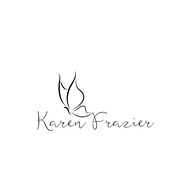|
I've started writing a series of articles for LoveToKnow outlining the symbolism and meanings associated with the major arcana tarot cards from the Latin Tarot (Rider-Waite-Smith).
The tarot was originally designed as playing cards with four suits (wands, swords, cups, and pentacles) and a trump suit. In game play, the major arcana cards are the trump suit. In tarot readings they represent archetypal energies, and their presence in a spread suggests something the querent should pay careful attention to. Quickly before I get to the major arcana cards, understand that even the suit cards are significant. They have numerological associations, imagery rich with symbolism, and each of the suits represents a classical element and an aspect of life.
0 Comments
I have an affinity for tarot and own several decks. I don't use them in the traditional way; for me, tarot is a way to focus my attention, and the cards I draw serve as a jumping off point for whatever energies I am working with in the moment.
Tarot has been such a part of my life for so long, I take it for granted. Recently, however, I've taken an interest in learning the history of tarot cards. There's all sorts of mythology about where tarot actually came from. Some suggest it has its roots in Ancient Egypt, while others suggest Ancient China or the Far East, and many believe that Romani people spread tarot from Asia into Europe. However, as author Robert Place suggests in his well-researched book The Tarot: History, Symbolism, and Divination, tarot cards probably began in the 14th or 15th century BCE when playing cards became popular (playing cards likely came from China). Place argues cards weren't possible or practical until the advent of paper, and papyrus or parchment, which would have been used in Ancient Egypt or China, wasn't sturdy enough for use in tarot decks. Originally, tarot decks were not used for divination but rather as another version of a playing card game that was the precursor to what we know as Bridge today. Early tarot decks had four suits (what those suits were depended on the region they were created) with 10 pip cards (ace through 10) and four nobility cards (Page or Jack, Knight, Queen, and King). These are the cards that are known today as the minor arcana. The decks also had 21 trump cards (what later became known as Major Arcana cards) that were played in a hierarchical order, and a wild card, which was The Fool (similar to Jokers in today's playing card decks). The earliest documented tarot cards came from Italy, and the oldest surviving deck is called the Visconti-Sforza Tarot, circa 1460. The deck was hand-painted by an artist for Francesco Sforza, the Duke of Milan. At the time, playing cards were a good way for artists to get their work known, and many special decks were hand painted while others were stenciled and hand colored or printed using blocks. During this period, tarot decks were mostly for the well-heeled because of the work required to make them. As use of the printing press spread throughout Europe in the 1500s, playing cards (including tarot) became widely available, as did the obsession with card games. Some of the earliest versions of printed tarot come from Marseilles, France, and the structure and design of these 78-card decks (known as the Tarot de Marseilles) remain the popular structure for many traditional tarot decks today, such as the Rider-Waite-Smith deck. The Tarot de Marseilles was likely derived from earlier Milanese decks that the French came in contact with when they conquered Milan in 1499. Suits in this deck include the minor arcana Pentacles, Wands, Cups, and Swords, as well as Major Arcana cards featuring archetypal symbols. The Major Arcana cards (in order) include:
Regardless of whether you choose a traditional deck based on the traditional Tarot de Marseilles (Osho Zen Tarot is an example of this) or another type of oracle card, such as one of my current favorite decks, Postcards from Spirit, you can learn traditional methods of tarot reading or do as I do and use the cards as a point of focus. When I use my decks (I select a deck randomly), I shuffle while focusing on a question and then draw a card. Using the imagery and symbolism from the card, as well as any thoughts or feelings the card may cause to arise, I use what I draw as a point of focus to help me find the answers to my questions within myself. In this way, tarot and oracle cards offer another tool in your arsenal for spiritual growth and development. Image by valentin_mtnezc from Pixabay Recently, I interviewed Portland-based palm reader Clay Faulkner for an article about palmistry for LoveToKnow. I learned a lot - it is a fascinating human science, and Clay was able to do some basic palm reading over the phone. What he told me about my palm was uncannily accurate.
If you ever have the opportunity to have your palm read from a seasoned pro, I'd recommend it. You can start with the article (linked above), which can give you some basic info about your own palm. Image by andreas160578 from Pixabay |
Categories
All
Archives
December 2022
|
AUTHOR KAREN FRAZIER
- Home
-
Books
- Angel Numbers for Beginners
- Avalanche of Spirits
- Chakra Crystals
- Complete Reiki
- Crystal Alchemist
- Crystals for Beginners
- Crystals for Healing
- Dancing with the Afterlife
- Dream Interpretation Handbook
- Essential Crystal Meditation
- Higher Vibes Toolbox
- Introduction to Crystal Grids
- Little Book of Energy Healing Techniques
- Noisy Ghosts
- Reiki Healing for Beginners
- Transform Your Life with Alchemy
- Ultimate Guide to Psychic Ability
- Usui Ryoho Reiki Manual
- Cookbooks
- Other Books
- Classes
- Connect
- Meditate



 RSS Feed
RSS Feed
